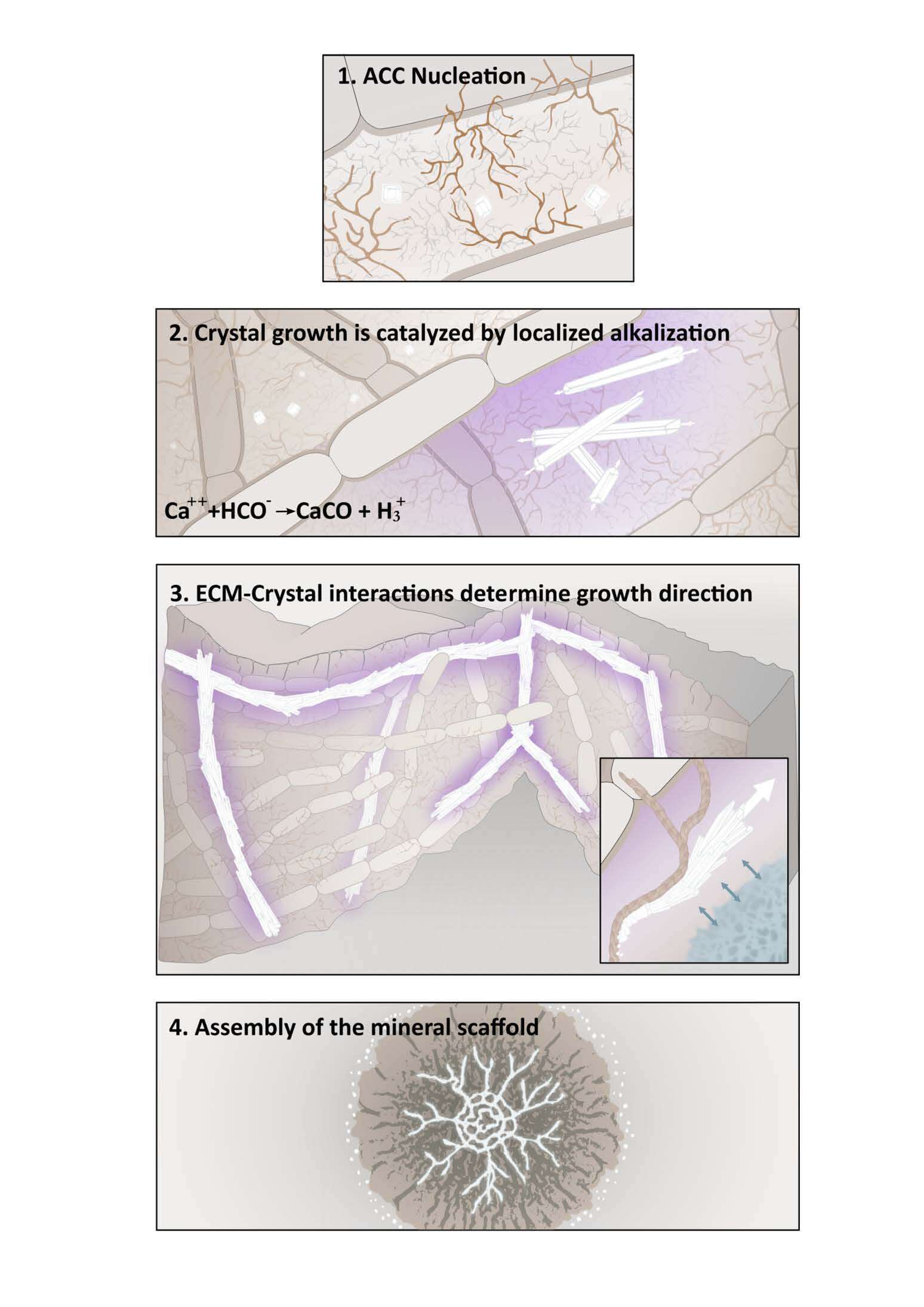
SPATIO-TEMPORAL ASSEMBLY OF FUNCTIONAL MINERAL SCAFFOLDS WITHIN MICROBIAL BIOFILMS
2Chemical Research Support, Weizmann Institute of Science, Rehovot, Israel
Multicellular bacterial communities, known as biofilms, have been thought to be held together solely by a self-produced extracellular matrix. Our study identified a novel mechanism maintaining Bacillus subtilis and Mycobacterium smegmatis biofilms- active production of calcite minerals. We studied, for the first time, the effects of mutants defective in biomineralization and calcite formation on biofilm development, resilience and morphology. We demonstrate that an intrinsic rise in carbon dioxide levels within the biofilm is a strong trigger for initiation of calcite-dependent patterning. The calcite-dependent patterns provide resistance to environmental insults, as well as an efficient strategy for carbon dioxide sequestration and to increase the overall fitness of the community. Our results suggest that it is highly feasible that the formati on of mineral scaffolds plays a cardinal and conserved role in bacterial multi-cellularity.

Powered by Eventact EMS